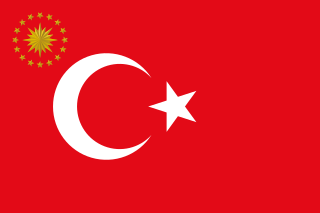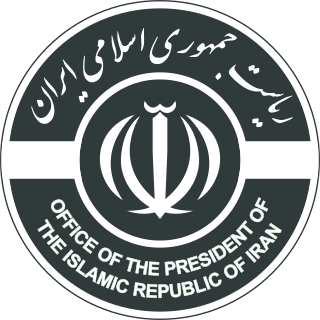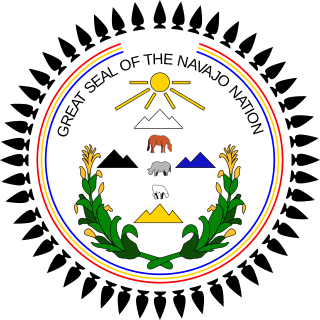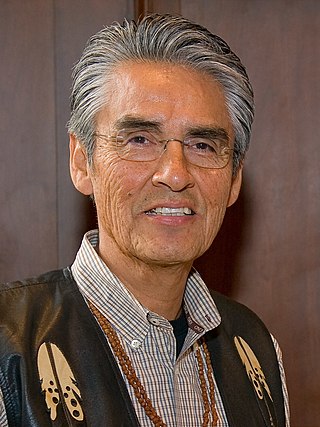
The president of India is the head of state of the Republic of India. The president is the nominal head of the executive, the first citizen of the country, as well as the supreme commander of the Indian Armed Forces. Droupadi Murmu is the 15th and current president, having taken office from 25 July 2022.

The president of Turkey, officially the president of the Republic of Türkiye, is the head of state and head of government of Turkey. The president directs the executive branch of the national government and is the commander-in-chief of the Turkish military. The president also heads the National Security Council.

The president of Iran is the head of government of the Islamic Republic of Iran. The president is the second highest-ranking official of Iran after the Supreme Leader.

The president of the Philippines is the head of state, head of government and chief executive of the Philippines. The president leads the executive branch of the Philippine government and is the commander-in-chief of the Armed Forces of the Philippines.

The president of the Republic of Kazakhstan is the head of state of the Republic of Kazakhstan and the commander-in-chief of the Armed Forces of the Republic of Kazakhstan. The president is the holder of the highest office within the Republic of Kazakhstan. The powers of this position are described in a special section of the Constitution of Kazakhstan.

The Navajo Nation Council is the Legislative Branch of the Navajo Nation government. The council meets four times per year, with additional special sessions, at the Navajo Nation Council Chamber, which is in Window Rock, Arizona.

A joint session of the United States Congress is a gathering of members of the two chambers of the bicameral legislature of the federal government of the United States: the Senate and the House of Representatives. Joint sessions can be held on any special occasion, but are required to be held when the president delivers a State of the Union address, when they gather to count and certify the votes of the Electoral College as the presidential election, or when they convene on the occasion of a presidential inauguration. A joint meeting is a ceremonial or formal occasion and does not perform any legislative function, and no resolution is proposed nor vote taken.

Joe Shirley Jr. is a Navajo politician who is the only two-term President of the Navajo Nation. He served as president from 2003 to 2011. He lives in Chinle, Arizona, and is Tódíchʼíiʼnii, born for Tábąąhá.

Peterson Zah was an American politician who held several offices with the Navajo Nation. From 1983 to 1987, he was chairman of the Navajo Nation, its then head of government. At its 1991 restructuring, he became the first president of the Navajo Nation, until 1995. He then worked at Arizona State University as special adviser to the president on American Indian Affairs and consulted companies willing to work with his nation.
Albert A. Hale was an American attorney and politician. A member of the Democratic Party, he served in the Arizona Senate from 2004 to 2011 and in the Arizona House of Representatives from 2011 to 2017.

The president of Nepal is the head of state of Nepal and the commander-in-chief of the Nepalese Armed Forces.
The president-elect of the United States is the candidate who has presumptively won the United States presidential election and is awaiting inauguration to become the president. There is no explicit indication in the U.S. Constitution as to when that person actually becomes president-elect, although the Twentieth Amendment uses the term "president-elect", thus giving the term "president-elect" constitutional justification. It is assumed the Congressional certification of votes cast by the Electoral College of the United States – occurring after the third day of January following the swearing-in of the new Congress, per provisions of the Twelfth Amendment – unambiguously confirms the successful candidate as the official "president-elect" under the U.S. Constitution. As an unofficial term, president-elect has been used by the media since at least the latter half of the 19th century, and was in use by politicians since at least the 1790s. Politicians and the media have applied the term to the projected winner, even on election night, and very few who turned out to have lost have been referred to as such.
The Navajo Nation presidential election of 2010 was held on Tuesday, November 2, 2010. Ben Shelly won the election.

Ben Shelly was the 7th president of the Navajo Nation. He was the first president to have been elected both president and vice president of the Navajo Nation, as well as the first New Mexican Navajo to hold the Navajo presidency.

Frank Chee Willeto was an American politician and Navajo code talker during World War II. Willeto served as the vice president of the Navajo Nation under President Milton Bluehouse, Sr. from his appointment in August 1998 until January 1999, when the Begaye administration took office.

The office of Vice-President of the Navajo Nation was created in 1991 following restructuring of the Navajo Nation government. The president and vice president are elected every four years. The Navajo Nation Vice-President shall serve no more than two terms.

Jonathan Nez is a Navajo politician who served as the 9th President of the Navajo Nation from 2019 to 2023. He previously served as Vice President and as a Navajo Nation Council delegate.
Designation is the process of determining an incumbent's successor. A candidate that won an election for example, is the designated holder of the office the candidate has been elected to, up until the candidate's inauguration. Titles typically held by such persons include, amongst others, "President-elect", and "Prime Minister-designate".

The office of the Speaker of the Navajo Nation Council was created in 1991 following restructuring of the Navajo Nation government. The Speaker is the head of the legislative branch and presides over sessions of the council. The Speaker of the council serve a term of two years during the administration of the incumbent President. The Office of the speaker is located in Window Rock, AZ at the Council Chambers.






















